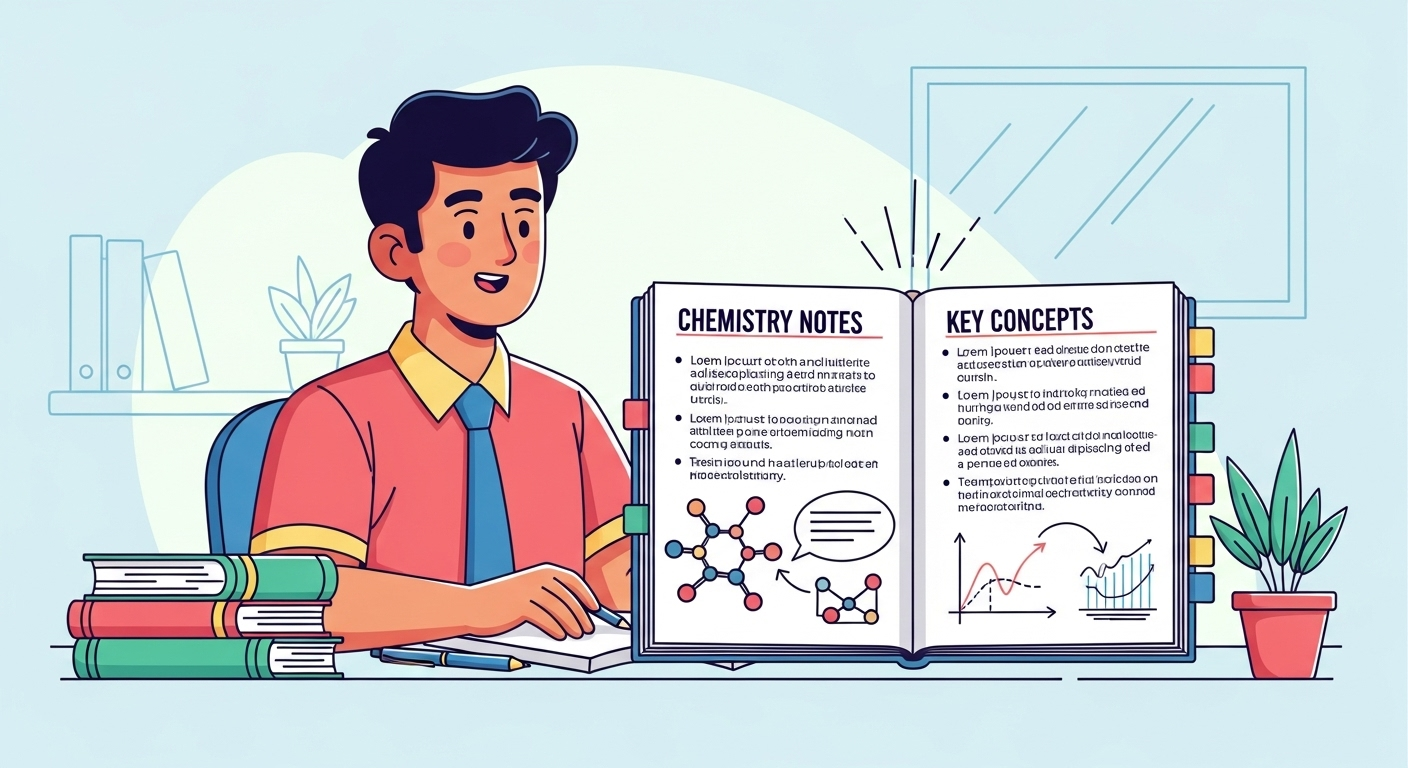How to Make Study Notes That Actually Boost Your Exam Scores
Hey there, future topper!
Let's be real. You’ve probably spent hours hunched over your desk, carefully writing down notes from a textbook or a lecture, only to realize during exam time that they’re a jumbled mess. They don't make sense, key points are missing, and you might as well just re-read the entire textbook. Frustrating, right?
You’re not alone. Most students are never taught how to take notes effectively. We're just told to "make notes." But what if I told you that smart note-taking isn't a chore? It’s a superpower. It’s the secret weapon that separates the students who struggle to revise from those who walk into the exam hall with confidence.
In this guide, we'll break down how to create study notes that are clear, concise, and actually work for you. Let's turn that frustration into focus!
Why Your Current Notes Might Not Be Working
Before we build the new, let's understand what might be wrong with the old. Do any of these sound familiar?

- The "Copy-Paste" Method: You write down everything the teacher says or everything that's in the textbook, word for word. Your notes are basically a handwritten copy of the book.
- The "Mystery Scribble": You write so fast that you can't even read your own handwriting later. Important formulas look like doodles.
- The "Disorganized Dump": There's no structure. Points from the start of the chapter are mixed with points from the end. There are no headings, no bullet points—just a wall of text.
- The "Too Beautiful to Use" Notes: You spend more time on fancy calligraphy and colourful highlighters than on understanding the content. They look great on Instagram but are impractical for quick revision.
Good notes aren't about writing more; they're about understanding more. Their job is to simplify complex information, not just store it.
3 Smart Note-Taking Methods That Work
Ready to level up? Here are three proven methods that cater to different learning styles. Try them out and see which one clicks for you!
1. The Cornell Method (The Organizer)
This method is legendary for a reason. It’s a highly structured system that forces you to engage with the material and summarize it.
- Divide Your Page: Take a fresh page and draw a large 'I' on it. This divides the page into three sections: a main notes column on the right (about 70%), a smaller cues/questions column on the left (30%), and a summary section at the bottom.
- Main Notes Column (Right): During your class or study session, take your regular notes in this large column. Don't stress about being perfect. Use short sentences, abbreviations, and bullet points.
- Cues Column (Left): After your study session, review your main notes. In the left column, pull out main ideas, keywords, or potential exam questions related to the notes on the right. This is the crucial step for active recall!
- Summary Section (Bottom): At the end of your study session, write a 1-2 sentence summary of the entire page in the bottom section.
Why it’s great: It makes revision super efficient. Just cover the right side and quiz yourself using the questions on the left. It’s active learning built right in!
2. Mind Mapping (The Visual Thinker)
If you're a visual learner who loves seeing connections, mind mapping is for you. It's a non-linear way to organize information that mimics how our brains naturally make associations.
- Start in the Center: Write the main topic or chapter name in the center of a blank page and draw a circle around it.
- Branch Out: Draw branches radiating out from the central topic for each main sub-topic. Use different colours for each main branch.
- Add Keywords & Images: On each branch, write keywords, not long sentences. Feel free to add small, simple drawings or symbols that help you remember the concept.
- Create Sub-Branches: From your main branches, you can draw smaller, secondary branches for details, examples, or formulas.
Why it’s great: It allows you to see the entire topic on a single page, making it easy to understand the relationships between different concepts. It's also fantastic for brainstorming.
3. The Outlining Method (The Logical Mind)
This is a classic for a reason. It's clean, logical, and perfect for subjects that have a clear hierarchical structure, like History, Political Science, or Biology.
- Main Topic (Heading 1): Start with the main topic at the top.
- Sub-Topics (Indent): Indent and list the key sub-topics using Roman numerals (I, II, III).
- Supporting Details (Indent Further): Under each sub-topic, indent again and add supporting details, facts, or examples using capital letters (A, B, C).
- Specific Points (And again!): You can go even deeper with numbers (1, 2, 3) for more specific points.
Why it’s great: It creates a neat, logical flow that clearly shows the structure of the information. It’s easy to read and helps you see the main points at a glance during revision.
Your Self-Study Partner for Perfect Notes
Now, creating these brilliant notes from scratch, especially when you're short on time, can still feel like a big task. You need to read the entire chapter, identify key points, and then structure them perfectly. What if you had a partner to do the heavy lifting for you?

That’s where having a smart Self Study Partner like Krutsha comes in handy. Krutsha helps you get instant, well-structured, and perfectly balanced notes on any topic from your CBSE syllabus.
- Struggling to structure your outline? Krutsha can instantly generate clear, structured notes that follow a logical flow, perfect for the outlining method.
- Need a quick overview for a mind map? Ask Krutsha for a summary or "Skimcard" of a chapter to get your central topic and main branches instantly.
- Don't know what questions to put in your Cornell cues? Krutsha can provide key questions and answers related to any concept, giving you ready-made material for your active recall practice.
It’s about studying smarter, not just harder. Krutsha provides the balanced, curriculum-aligned foundation so you can focus on what matters most: understanding and remembering.
Ready to Turn Your Notes into a Superpower?
Stop seeing note-taking as a boring chore and start seeing it as building your personal success guide for exams. With a little practice and a reliable study partner, you'll be creating notes that make revision a breeze and help you walk into every exam feeling prepared and confident. You’ve got this!
Start Studying Smarter Today